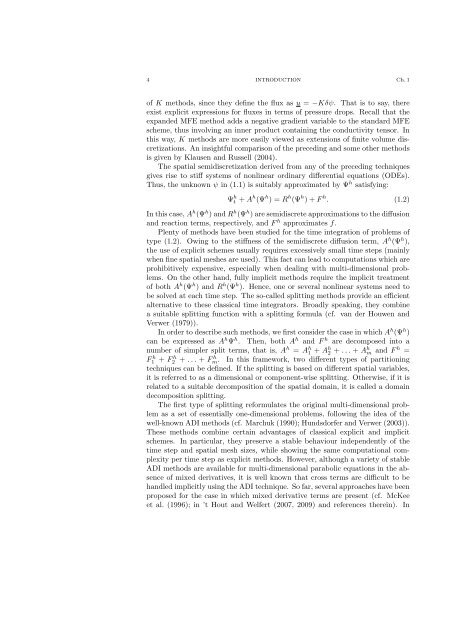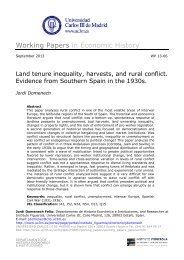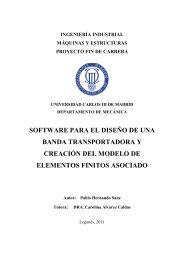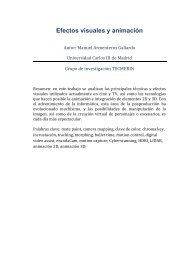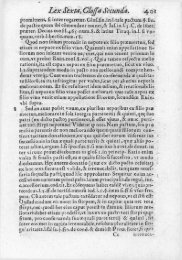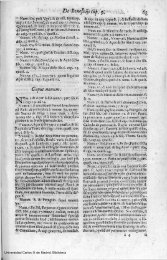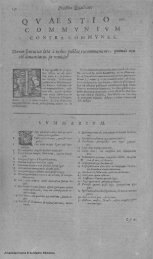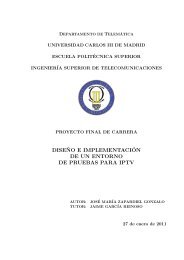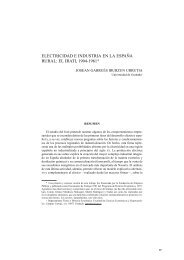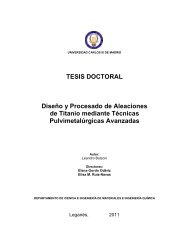Métodos miméticos de pasos fraccionarios - E-Archivo - Universidad ...
Métodos miméticos de pasos fraccionarios - E-Archivo - Universidad ...
Métodos miméticos de pasos fraccionarios - E-Archivo - Universidad ...
Create successful ePaper yourself
Turn your PDF publications into a flip-book with our unique Google optimized e-Paper software.
4 introduction Ch. 1<br />
of K methods, since they <strong>de</strong>fine the flux as u = −Kδψ. That is to say, there<br />
exist explicit expressions for fluxes in terms of pressure drops. Recall that the<br />
expan<strong>de</strong>d MFE method adds a negative gradient variable to the standard MFE<br />
scheme, thus involving an inner product containing the conductivity tensor. In<br />
this way, K methods are more easily viewed as extensions of finite volume discretizations.<br />
An insightful comparison of the preceding and some other methods<br />
is given by Klausen and Russell (2004).<br />
The spatial semidiscretization <strong>de</strong>rived from any of the preceding techniques<br />
gives rise to stiff systems of nonlinear ordinary differential equations (ODEs).<br />
Thus, the unknown ψ in (1.1) is suitably approximated by Ψ h satisfying:<br />
Ψ h t + A h (Ψ h ) = R h (Ψ h ) + F h . (1.2)<br />
In this case, A h (Ψ h ) and R h (Ψ h ) are semidiscrete approximations to the diffusion<br />
and reaction terms, respectively, and F h approximates f.<br />
Plenty of methods have been studied for the time integration of problems of<br />
type (1.2). Owing to the stiffness of the semidiscrete diffusion term, A h (Ψ h ),<br />
the use of explicit schemes usually requires excessively small time steps (mainly<br />
when fine spatial meshes are used). This fact can lead to computations which are<br />
prohibitively expensive, especially when <strong>de</strong>aling with multi-dimensional problems.<br />
On the other hand, fully implicit methods require the implicit treatment<br />
of both A h (Ψ h ) and R h (Ψ h ). Hence, one or several nonlinear systems need to<br />
be solved at each time step. The so-called splitting methods provi<strong>de</strong> an efficient<br />
alternative to these classical time integrators. Broadly speaking, they combine<br />
a suitable splitting function with a splitting formula (cf. van <strong>de</strong>r Houwen and<br />
Verwer (1979)).<br />
In or<strong>de</strong>r to <strong>de</strong>scribe such methods, we first consi<strong>de</strong>r the case in which A h (Ψ h )<br />
can be expressed as A h Ψ h . Then, both A h and F h are <strong>de</strong>composed into a<br />
number of simpler split terms, that is, A h = A h 1 + A h 2 + . . . + A h m and F h =<br />
F h 1 + F h 2 + . . . + F h m. In this framework, two different types of partitioning<br />
techniques can be <strong>de</strong>fined. If the splitting is based on different spatial variables,<br />
it is referred to as a dimensional or component-wise splitting. Otherwise, if it is<br />
related to a suitable <strong>de</strong>composition of the spatial domain, it is called a domain<br />
<strong>de</strong>composition splitting.<br />
The first type of splitting reformulates the original multi-dimensional problem<br />
as a set of essentially one-dimensional problems, following the i<strong>de</strong>a of the<br />
well-known ADI methods (cf. Marchuk (1990); Hundsdorfer and Verwer (2003)).<br />
These methods combine certain advantages of classical explicit and implicit<br />
schemes. In particular, they preserve a stable behaviour in<strong>de</strong>pen<strong>de</strong>ntly of the<br />
time step and spatial mesh sizes, while showing the same computational complexity<br />
per time step as explicit methods. However, although a variety of stable<br />
ADI methods are available for multi-dimensional parabolic equations in the absence<br />
of mixed <strong>de</strong>rivatives, it is well known that cross terms are difficult to be<br />
handled implicitly using the ADI technique. So far, several approaches have been<br />
proposed for the case in which mixed <strong>de</strong>rivative terms are present (cf. McKee<br />
et al. (1996); in ’t Hout and Welfert (2007, 2009) and references therein). In


